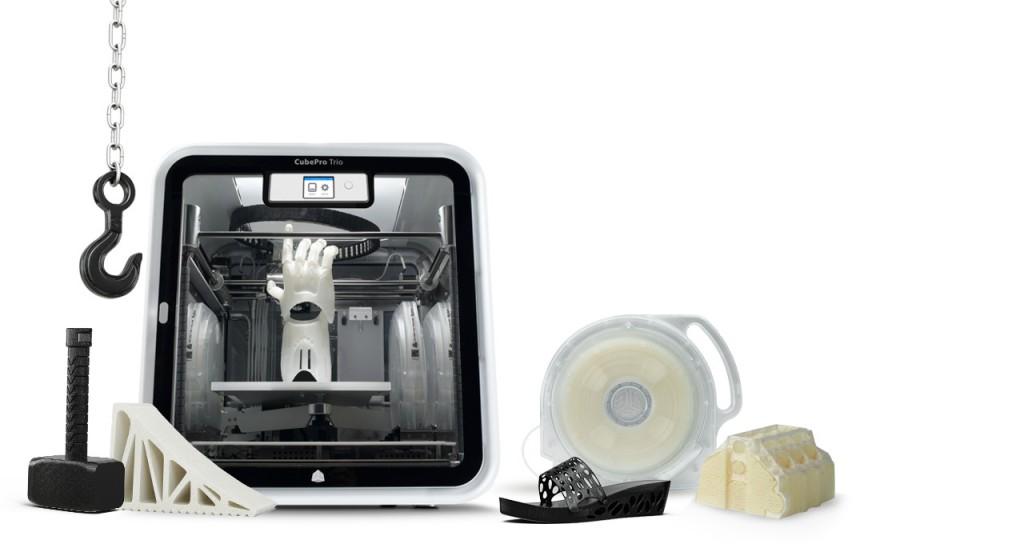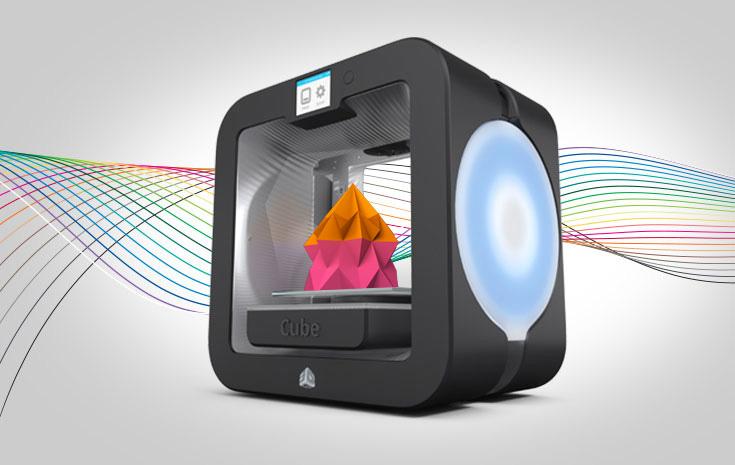3DS ‘Nylon for CubePro’ Available Now for Added Strength & Flexibility in Desktop 3D Printing & Manufacturing
 As one innovation after another in 3D printing has garnered the attention of the world, it has quickly become a mainstream interest. Desktop 3D printer sales are skyrocketing and multiple sectors are using the technology to their own devices–and rightfully so–from helping to save lives to making high-quality car and jet parts right on down to allowing for artists to make incredible new pieces for their portfolios–and even for glamorous movie makers to open up new lines of marketing and branding with nearly infinite choices in 3D printed items and promotions.
As one innovation after another in 3D printing has garnered the attention of the world, it has quickly become a mainstream interest. Desktop 3D printer sales are skyrocketing and multiple sectors are using the technology to their own devices–and rightfully so–from helping to save lives to making high-quality car and jet parts right on down to allowing for artists to make incredible new pieces for their portfolios–and even for glamorous movie makers to open up new lines of marketing and branding with nearly infinite choices in 3D printed items and promotions.
With such an explosion of success and new offerings available via 3D printing, energy is high and there is a flurry of new products being launched nearly every day, targeting every user possible. Let’s not forget where the roots of 3D printing lie though, and that’s in engineering, looking at a technology originally made by and for engineers. And while it’s a world of sharing, which is an enormous part of the magic of digital design and 3D printing, the engineers must still be catered to for much of the important strategic innovation regarding design of… well, nearly everything important.
From designing to testing to actual real world use, engineers and designers using the CubePro 3D printer today are looking for materials that are able to not just withstand heavy use, but also offer reliability for safety as well as longevity. 3D printed parts often must also be able to withstand impact but still be light in weight too. With the release of 3D Systems’ new engineer-grade Nylon material, the CubePro user can get excited about a strong new filament that also offers a flexible nature, as well as “unparalleled durability.”
 We’ve followed as 3D Systems developed and released the CubePro, offering innovations from its controlled environment scenario to the ability to print three colors simultaneously. Users can 3D print big, and they can do so reliably and predictably with a variety of new materials via 3D Systems, as we see again today.
We’ve followed as 3D Systems developed and released the CubePro, offering innovations from its controlled environment scenario to the ability to print three colors simultaneously. Users can 3D print big, and they can do so reliably and predictably with a variety of new materials via 3D Systems, as we see again today.
“We are thrilled to offer this long-awaited material to our core, desktop user base, empowering engineers, small businesses and start-ups alike with the most durable and high performing material for PlasticJet Printing,” said Peter Theran, Vice President, Global Consumer Products, 3DS. “Nylon for CubePro takes desktop 3D printing where it’s never gone before: into direct-manufacturing and end-use part production.”
 While producing prototypes from the desktop 3D printer, testing them out, and heading straight into small-scale manufacturing, dedicated users and customers will be rewarded with strong parts thanks to the new blend available in this new Nylon, including Nylon 6, and a structure that is compatible with Infinity Rinse-Away water-soluble support material.
While producing prototypes from the desktop 3D printer, testing them out, and heading straight into small-scale manufacturing, dedicated users and customers will be rewarded with strong parts thanks to the new blend available in this new Nylon, including Nylon 6, and a structure that is compatible with Infinity Rinse-Away water-soluble support material.
Combined with Rinse-Away, Nylon is promised to produce the best in 3D prints for professionals who require high-quality output–and consistently so. We’ve followed the development and release of Rinse-Away, which is of invaluable use to those who are sick of having to spend valuable time prying away supports from 3D prints, often becoming terribly frustrated or accidentally destroying prints in the process.
“When prototyping my custom-built, visual effects robot I knew ABS would be strong enough for some fit testing; but when it got to doing the real work, the functional testing and ongoing use, I needed the strength and endurance that Nylon delivers,” says Luke Schantz, Technologist at SoftLayer. “I’ve used a lot of desktop 3D printers and a mix of materials on the market, but CubePro with Nylon is a product-material combination that is unmatched in performance.”
The 3DS team describes this new material as “tough as nails, with flexibility.” They designed it for the ultimate ‘form and function’ as it will snap right back to form upon flexing. Nylon for CubePro is able to give 3D printed objects a smooth surface finish, and 3DS recommends it if you are 3D printing parts that require load bearing, base strength.
- Tensile Strength: 4,785 psi with flexibility of a dog bone-like shape of 1/8th inch thick, 1/2 inch wide
- Elongation at Break Value: 22%, meaning 1 inch can stretch to 1.22 inches
- Strength-to-Weight Ratio: 174 psi, for light and strong parts with honeycomb infill structure
- Tensile Modulus: 248,005 psi
- Flexural Strength: 8,270 psi
- Hardness, Shore D: 75 via needle penetration, meaning Nylon is as hard as a hardhat
Will you be ordering Nylon for your CubePro 3D printer? Does this fulfill some of the requirements you need while manufacturing prototypes and parts from your CubePro? Discuss in the 3DS Nylon for CubePro forum thread over at 3DPB.com. Check out the video below to see some of the capabilities offered.
Subscribe to Our Email Newsletter
Stay up-to-date on all the latest news from the 3D printing industry and receive information and offers from third party vendors.
You May Also Like
Precision at the Microscale: UK Researchers Advance Medical Devices with BMF’s 3D Printing Tech
University of Nottingham researchers are using Boston Micro Fabrication‘s (BMF) 3D printing technology to develop medical devices that improve compatibility with human tissue. Funded by a UK grant, this project...
3D Printing Webinar and Event Roundup: April 21, 2024
It’s another busy week of webinars and events, starting with Hannover Messe in Germany and continuing with Metalcasting Congress, Chinaplas, TechBlick’s Innovation Festival, and more. Stratasys continues its advanced training...
3D Printing Webinar and Event Roundup: March 17, 2024
It’s another busy week of webinars and events, including SALMED 2024 and AM Forum in Berlin. Stratasys continues its in-person training and is offering two webinars, ASTM is holding a...
3D Printed Micro Antenna is 15% Smaller and 6X Lighter
Horizon Microtechnologies has achieved success in creating a high-frequency D-Band horn antenna through micro 3D printing. However, this achievement did not rely solely on 3D printing; it involved a combination...






























